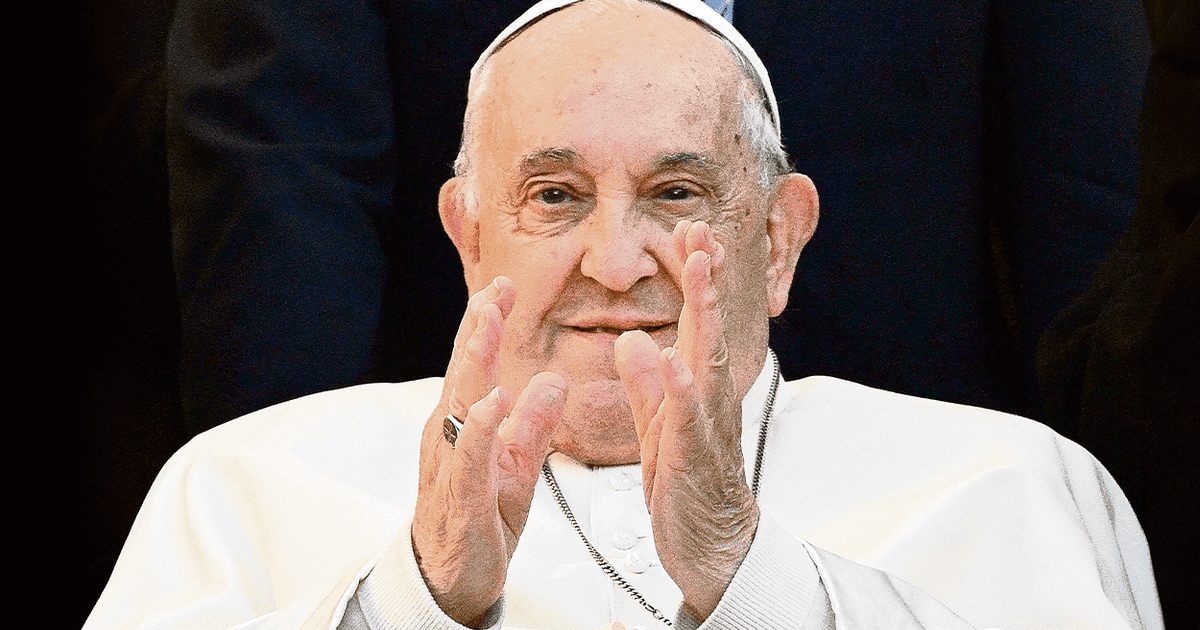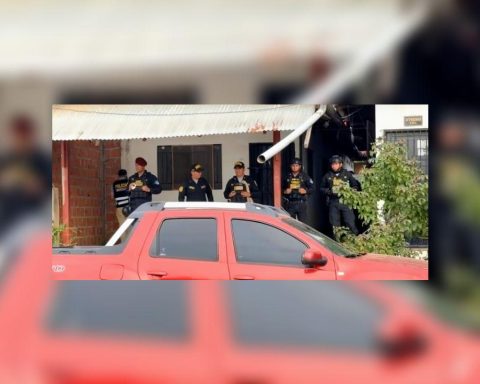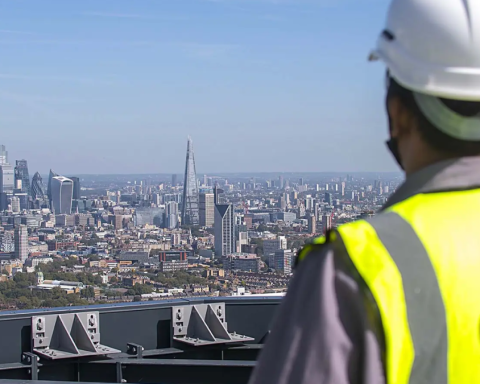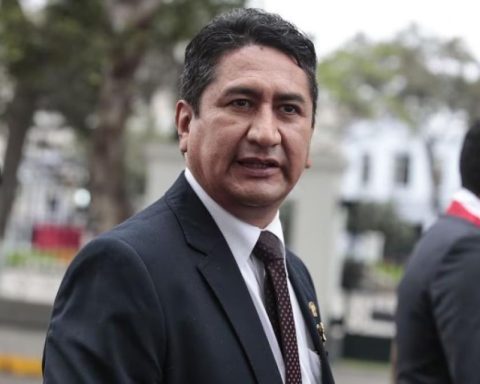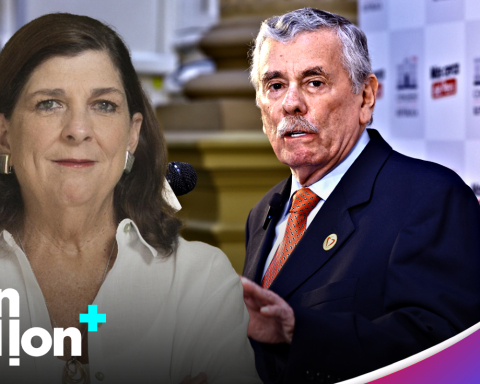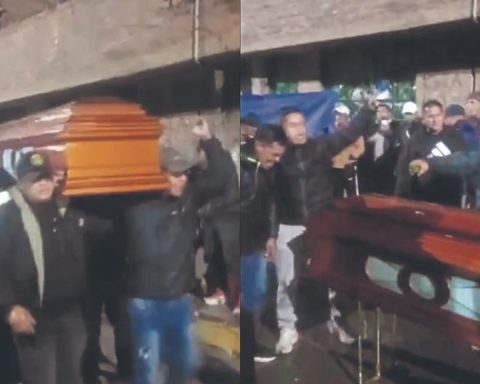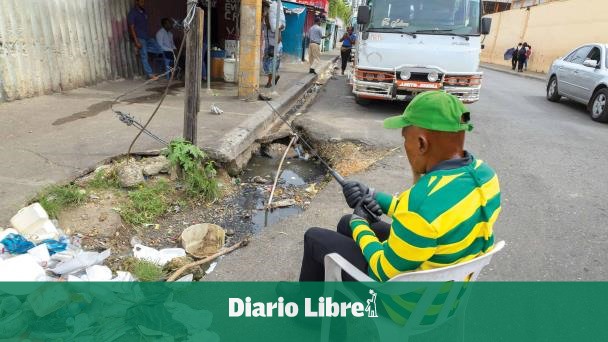By Paola Ugaz
Jorge Mario Bergoglio has lived through the rough and the bad within the Church which shelters him and where he entered as a novice in the house of the Jesuits. There is a first Bergoglio, the young promise of the Jesuits: one of the youngest provincials of the company, idolized by some as a bulwark against Marxism while others abhorred him.
Then, as archbishop of Buenos Aireswill host the Sodalicio in its residence of The Olive Treesbecause those Peruvians, led by Óscar Tokomura and Luis Ferroggiaro, allegedly worked on behalf of the poor without falling into Marxism.
But when it comes to the minor victims of sexual abuse who were already beginning to be known after the scandal caused by the Boston Globe investigative group in 2002, Bergoglio thought the same as his brothers: a corporate vision. If there was no scandal, it was better not to rock the boat too much. Reparate the victim, but justly. And sometimes not even that.
The Council arrives Vatican II and marks a turning point: society is moving away from God and we must connect with the new times. The Church sees it necessary to put an end to the Tribunal of the Holy Office and not to suffocate theologians with narrow corsets. Some movements in the Church such as Opus Dei and the Sodalicio de Vida Cristiana will choose to follow an opposite process: uplifting tradition as doctrine.
The curious thing is that the one who made the proposal to end the Holy Office was the Archbishop of Cologne, Cardinal Josef Frings, assisted by a young German theologian: Joseph Ratzinger.
His proposal to suppress the tribunal of the Holy Office was accepted by Paul VI, but a problem arose that no one noticed: since 1965, pedophilia was no longer prosecuted as a crime in the Church. Thirty years later, the one who caused the closure of the Holy Office, Joseph Ratzinger, will be the one who once again implements a law to fight against abuses in the Church and resurrects an essential court to restore order. Monsignor Jordi Bertomeu has explained Ratzinger’s 180-degree change in different articles published in recent years.
And Bergoglio became Francis
Bergoglio is elected pontiff in a 2013 conclave, held because the previous pope, Benedict XVI, resigned due to prevailing corruption. They were looking for a cardinal with extraordinary government skills. Bergoglio is the person.
His first shock upon reaching the pontificate is not economic corruption, but moral corruption. The Church is muddied by covert abuses in the world and, above all, in the Vatican Curia. From 2013 to 2018, he attempted a first shock therapy: he used the legislative instruments that gave him the full power to be pope. It’s not enough. In 2014, he invented the Pontifical Commission for the Protection of Minors and Vulnerable People, which has not yet found its way; For this reason, the first report after ten years of operation has been a disappointment for the victims.
In 2014, Francisco took out the College for Resource Examination; that is, a third instance in the doctrine of faith that does not work either. In 2015 he issued the law Like a Loving Mother, to act against the bishops in the protection of the abused: the pope realized that he would have to apply it to 99 percent of the bishops and he would be left without a curia.
In 2018 there is a real change of mentality in Francisco. After the mission formed by Charles Scicluna and Jordi Bertomeu was sent to Chile due to the scandal of the abusive priest Fernando Karadima, Francisco met Juan Carlos Cruz. The pope realizes his mistake: the victims are above the institution.
He also perceives that by not acting, the Church covers up the abuses. For this reason, Francis calls a summit in the Vatican, where they will deal with the elephant in the glassware: abuses in the Church. After the summit, Francis published in 2019 one of the decisive laws of his pontificate: Vos Estis Lux Mundi, which makes concealment in the Church a crime and gives rise to another change: the vademecum of the Congregation for the Doctrine of the Faith.
In 2021, he will undertake the reform of the 1983 Code of Canon Law, which will extend the abuse of minors to lay people as well, so that if it had been in force 30 years earlier, Luis Fernando Figari could have been criminally convicted.
Just as it happens in Chile, it happens in Peru. On November 10, 2022, Francisco heard the testimony that I gave as a journalist, in which I told him that Pedro Salinas and I were persecuted in Peru by a group within the Catholic Church, the Sodalicio, and against what would be a normal action by The Roman Curia launches a mission to verify if what was said was true. Francis begins to show his inner freedom in his commitment against abuses, beyond Vatican politics and diplomacy.
The same Archbishop Bergoglio, who 30 years earlier welcomed the Sodalicio in Buenos Aires, thinking that they would help him combat Marxism in the Church, now acts with all rigor against the same group. All this after verifying the sectarian and abusive nature of the entities founded by Luis Fernando Figari and directed today by Jaime Baertl. On the topic of the Sodalitium, if analyzed well, the true Francis emerges.
On a personal level, the pope is a man of the Church who understands and likes government. He is an old school Jesuit, one of those who pray and, at the same time, are great strategists. He is someone who lives so that every minute of the day is as the Jesuit motto says: “To the Greater Glory of God.”
As a good strategist, he always keeps aces up his sleeve, which is wide. The day he received us he had hit himself on the chin, but he told us that it had actually been given to him by a bishop whom he had not made a cardinal the day before. Or also when they say to him, “Holy Father, we pray for you,” he adds: “For or against?”
However, Francisco has a weak point: when he becomes fond of someone, they can easily betray him. As cardinals very close to him have done: Francisco Javier Errazuriz (Chile), Oscar Andrés Rodríguez Madariaga (Honduras), Giovanni Angelu Becciu (Italy), among others.
In his work method he launches trial balloons. When he began the pontificate, he said “I foresee it being a short pontificate”: we have been there for eleven years and every day Francis shows his perfectly poor iron health. Those like Alejandro Bermúdez or José Antonio Eguren who think he is about to die or resign could be surprised that his successor is still in the seminary.
What would be more typical of a young person, such as not being tied to any work method, Francisco assumes normally. When the method doesn’t work, change. Despite the complaints of his curial collaborators, who tell him “it has always been done this way”, “this is not prudent, Your Holiness”, etc. The Pope moves with changes that are disconcerting but with a very defined direction, which is marked by his Ignatian “principle and foundation” method.
This creativity as a working method baffles locals and strangers. Francis, for example, realized that the curial hierarchy was not accompanying him in his fight against abuse and, surprisingly for everyone, he decided to hold a “synod of synodality” so that the entire Church would learn to listen to the abused without a voice and learn to find solutions. This decision is more appropriate for a young person than for an 88-year-old person. Whether or not their proposals work is another story.
On the other hand, the Pope is very tolerant of sinners, especially when the person recognizes it and sincerely asks for forgiveness. Here the pope is disarmed. We have seen this tolerance, considered excessive by many, when it welcomed an extreme case such as Bishop Xavier Novell, who lived as a homosexual, underwent a reversion process, married a divorced woman with children and had two more. Because of the welcome that Francis gave to the Samaritan woman as Jesus, no bishop dares to say anything against him.
On the other hand, Francis does not tolerate and is harsh with corruption: as he has repeated countless times, he distinguishes between corruption and sin. Therefore, when he sees mafia systems in the Church, Francis does not forgive. Jaime Baertl and his cronies would have to take note.
You don’t play with Bergoglio: a few weeks ago he received those manipulated by Baertl-Eguren thinking that they would be generous and withdraw the complaint they had filed against Jordi Bertomeu. In exchange, the pope would withdraw the threat of excommunication, which was highly deserved. Six days later, not only do they not withdraw their complaint, but they present one more in the Roman Rota. Not only that: they sneak into Francisco’s visit a former sodalite of major brand, Ignacio Blanco Eguiluz, who until a few days before was Giuliana Caccia’s boyfriend and for many years, the personal secretary and close friend of Figari, the founder of the Sodalitium.
There are not two Francises
Francisco took note, immediately receiving Pedro Salinas, Elise Allen and myself, and clearly stating that this way of proceeding is intolerable. There are not two Francises, as they have wanted to say. Or a schizophrenic pope: what there is in the Church is a pope who does not allow himself to be fooled, which is very different.
Francisco by training and background is conservative. When he was young he was a Peronist. As his more progressive Jesuit brothers have known well, they had him marginalized for years. But over time, Francis has realized that neither liberation theology was as Marxist as Figari and his followers said, nor was the ecclesial right the panacea for a Church in the process of secularization. For this reason, Francisco is neither right nor left. It’s just “Christian.”
It would be not understanding anything about Francisco if you want to pigeonhole him into these labels. Rather, Francis hates this polarization, evident in episcopates such as the Peruvian or the United States. For example, from the beginning, Francisco did not have any chemistry with Cardinal Juan Luis Cipriani, who in Peru became the spearhead of the most rabid Fujimorism, nor with the Archbishop of Denver, Samuel Aquila, who thinks that the church will be saved. if you follow Donald Trump. By this we do not mean that Francisco is a follower of Kamala Harris. Francisco is a very independent man.
He doesn’t marry anyone, only those who suffer. Whoever wants to say that Francisco is left-wing for taking up the cause of migrants, of those who suffer xenophobia or the effects of the war in Gaza or are discriminated against for being LGTBIQ, is misplaced. Therefore, his aversion to some politicians from Latin America, the continent of great social contrasts, who take advantage of their status to live off of privilege.
And that doesn’t mean he stops being head of a State that is the smallest territorially speaking. As a skilled politician, he tries to be a mediating factor when he sees something that is not right. Without this, the first message from Nuncio Paolo Gualtieri in Peru would not be understood, his envoy at a peculiar moment in the country’s history, although he later began collusion with other sectors and ended up being unfaithful to the mandate received.
The “young” Francisco turns 88 today. The victims of all types of abuse in the world have a reference in him, whether they are Catholics, agnostics or atheists. They know that in Rome there is someone who, despite his failures, wants to be faithful to his principles and an ethical life. For this reason, we admire him and if we are believers, we pray for him, and if we are not, we send him “good vibes.” Congratulations, Francisco.
Path
- Ordination. Pope Francis received the priestly order on December 13, 1969. Previously he had been a teacher of Literature and Psychology.
- Bishop. On May 20, 1992, Pope John Paul II appointed him titular bishop of Auca and auxiliary of Buenos Aires. His episcopal ordination was presided over by Antonio Quarracino on June 27 of that same year.
- Pontiff. At 76 years old, on March 13, 2013, Jorge Bergoglio was elected pope. He is the first American Jesuit and bishop to reach the highest position in the Catholic hierarchy.
